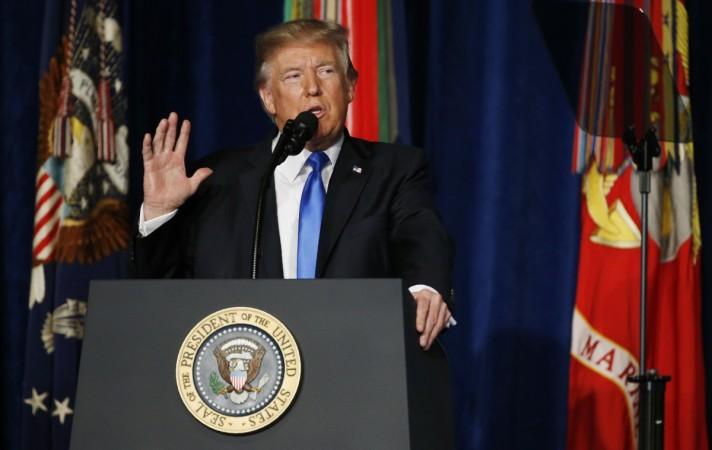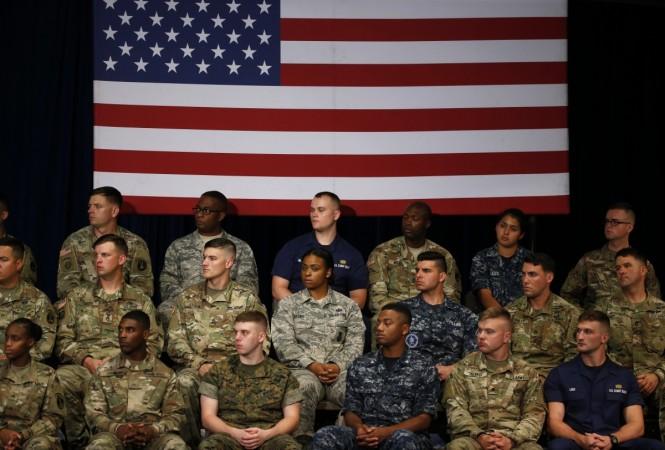
For President Donald Trump, Monday (August 21) was a day of transformation from a citizen into the national leader and he also acknowledged the fact.
Speaking about his earlier opinion of pulling out of Afghanistan expressed six years ago, Trump said his original stand was to pull out of Afghanistan but as the president of the US, he studied the Afghanistan problem in detail and from all possible angles. The president showed an honest face when he conceded the fact that things are not the same when one becomes the president of the country.
Trump's decision to boost the US troops' presence in Afghanistan has been questioned by many as an indication that the country will sink further in the quagmire and find it more difficult to come out of it. The US's military presence in Afghanistan has been continuing since 2001 after the then George W Bush administration had invaded the country to nail Osama bin Laden in the wake of the September 11 attacks. Bush's successor Barack Obama had laid the plans for his country's pullout but they did not succeed and he eventually raised the troops' number. And now, with Obama's successor Trump also failing to reverse the script, one suspects Washington might have a permanent setback in Afghanistan.
What the American leadership in US can do under current circumstances?
But even if one talks realistically, what else can the American leadership do in Afghanistan under the current circumstances? During the Cold War era, when the Soviets had invaded Afghanistan, putting the buffer between the warring ideological camps under threat, the equation was more in the black and white.
To tackle the USSR, the US had backed Pakistan and the Chinese, who had a bad relation with Moscow then, also became a part of the axis. In the post-Cold War era, the same equations changed so drastically that the US now clearly has no clear roadmap to arrive at a solution over Afghanistan. The regional conflict has become so complicated with diverse parties (include states and non-states) having their stakes that aspiring to find peace has become more theoretical quest.
Too many parties lock horns in Afghanistan region today
Afghanistan, today, involves interests of several ambitious parties today. India, for instance, wants to play a bigger role in Afghanistan as a measure to bolster its Pakistan policy and contain Islamabad by taking into confidence its other neighbours like Kabul and Tehran. This has naturally unnerved Pakistan and it is trying to use the Afghan Taliban to unsettle the efforts of Afghanistan's rebuilding. This has adversely affected Islamabad's relation with both Kabul and Washington. And with Trump now seriously reprimanding Pakistan for not reining in the terrorists, there is even greater possibility of the latter leaning towards the Chinese and Russians.

The Trump administration's considering roles for India will make things more complicated as Pakistan and China, with which India is having a serious confrontation at the moment, will be alarmed. Speaking about China, it is not much concerned about Afghanistan but will veto any measure taken against Pakistan, which will put the peace plan for Afghanistan featuring India, in jeopardy. On the other hand, if trade is considered a factor which can bolster peace between Pakistan and Afghanistan, China's ambitious world highway would also put that under peril.
Trump and his administration have to address a great many issues if the US really wants to give peace a chance in Afghanistan without adding to its troops. They need to understand the vitality of an improvement in India's relations with Pakistan if Afghanistan has to be stabilised but that in itself is a gargantuan task to accomplish and would require addressing of more vital issues.
Trump has inherited an Afghanistan policy the aims of which were never easy to accomplish despite being based on military steps, like helping Afghanistan to become self-sufficient militarily. But since it has not happened over time and the threat to regional security has only increased, the US has virtually no other option but continue with its forces in Afghanistan.















